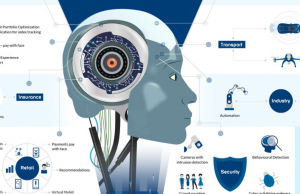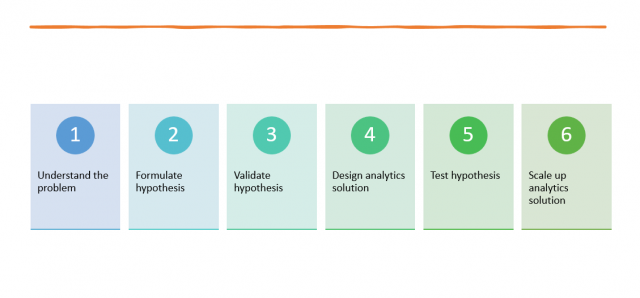
As artificial intelligence (AI ) and machine learning (ML) solutions and technologies continue to evolve, more and more businesses are looking for ways to incorporate them into their operations to realize a greater business impact. But with so many potential applications, it can be difficult to know where to start. In this blog post, we’ll outline some tips for identifying AI / ML use cases. We’ll also provide a few examples of how AI & machine learning can be used in business settings. So if you’re thinking about adding AI or machine learning to your toolkit, read on! This blog post will be appropriate for product managers, business analysts, data science architects, data scientists, etc.
Challenges related to identifying AI / Machine learning use cases
The following are some of the challenges you may face when trying to identify AI and machine learning use cases for your business:
- Lack of knowledge of business problem: You may not be having full knowledge about the business problem. As a data scientist, you could either work with business analyst / product managers or directly with end users to understand what’s the business problem where AI is required to be used as a lever.
- Lack of familiarity with related AI use cases: You may not be familiar with all of the potential applications of AI & machine learning related to the business problems you are trying to solve. Although it can be helpful to know the different types of AI-based applications used in past, it is not necessary that you must know them. You can always arrive at the first principles of business problem where decisions form the key and decide whether you need artificial intelligence to take one or more decisions related to the business problem. You may check out my post related to first principles thing – First principles thinking: Concepts & Examples.
- Lack of clarity on how AI will fit in: It can be difficult to determine how a particular AI or machine learning solution will fit into your existing business processes. This happens primarily because we might not have the clarity on decision points related to the business problem we are trying to solve.
When human thought process / intelligence becomes limited to take decisions based on several parameters, artificial intelligence comes to the rescue.
- Lack of knowledge on related analytical solutions: There may be several different analytical solutions including those related to AI & machine learning that could potentially address the same problem. So how do you choose the right one? This challenge arises when try to solve problem by analogical thinking. This can be tackled well with first principles thinking.
- You may not be sure about the expertise or budget required to implement AI or machine learning solutions.
- You may be concerned about the potential risks associated with AI & machine learning technologies, such as data privacy and security issues.
- You may not be sure about how to measure the success of an AI or machine learning project. At times, it is helpful to know the value metrics related to problem you are trying to solve by leveraging artificial intelligence / machine learning technologies. Having a good understanding of value metrics helps you align well with how you would want to leverage AI.
How to identify AI and machine learning use cases
The following is a diagrammatic representation of different steps that can be taken to identify or arrive at the most appropriate analytics solutions including AI/machine learning use cases: The following are different steps you can take to identify how many AI/ML models or solutions you will need to solve a particular business problem and realize the business value:
The following are different steps you can take to identify how many AI/ML models or solutions you will need to solve a particular business problem and realize the business value:
- Understand the business problem/opportunity: Understanding the business problem/opportunity is key to arriving at the right kind of AI / ML solutions. You can break down the business problems into subproblems to understand them in a better manner. This is key aspect of analytical thinking. Let’s say the problem is to increase the sales of gaming laptops in a particular region. The challenge is how can we solve this problem of increasing sales using an analytical solution. What kind of analytical solutions can be used? Do we need a dashboard leveraging the existing data sets? Do we need AI / Machine learning-based solutions?
- Stakeholders (RACI): Product managers/business analysts hold the accountability and responsibility of describing the problem/opportunity in detail and breaking down the problem into subproblems. Business owners are consulted and data scientists are informed.
- Identify various different decision points: First and foremost, you can get started by identifying different decision points which is required for solving business problem. For example, the following can be decision points related to increasing sales of gaming laptops:
- Who are the users who would need the gaming laptop? Can we identify different user segments?
- What is the price the different user segments would be willing to pay?
- What discounts will work for different user segments in order to have them purchase the products?
- What messaging will work well for different user segments?
- What kind of marketing campaigns will work for different user segments?
- When can the marketing campaigns be run for different user segments?
- Formulate the hypotheses related to solution approaches: Different decision points can be seen as the sub-problems which need to be tackled. These subproblems will have one or more solutions that can be formulated as hypotheses. These hypotheses (proposed solution approaches) can be formulated as alternate hypotheses with corresponding null hypotheses. Check out this post on hypothesis testing – Hypothesis testing explained with examples. For example, let’s say one hypothesis for increasing sales of gaming laptops in the chosen region is running a marketing campaign for the age group 12-18 will result in greater sales.
- Stakeholders (RACI): Data scientists hold the responsibility for hypothesis formulation while product managers/business analysts are consulted. The data team is informed about the problem/opportunity.
- Validate the hypotheses: Once the hypotheses are formulated, the next step is to validate or test the hypotheses. The goal is to validate and test whether the hypotheses can be established as truth for a certain duration of time and adopted in the business as part of the solution. Continuing on the example listed in the previous points, the first step is to validate the hypothesis of whether running a marketing campaign in the age-group 12-18 years will increase sales. In order to validate the hypothesis, data scientists can collect the data for the last few years (from internal or external sources) and perform an analysis on video gaming patterns vis-a-vis age groups vis-a-vis gaming laptop sales. If it is found that there is a correlation, then the hypothesis gets validated. The next step is to test the hypothesis in the chosen region.
- Stakeholders (RACI): Data scientists hold the responsibility of validating the hypothesis while the data team is consulted to understand and retrieve the data. Business analysts/product managers are informed about the progress.
- Design analytics solution: For the hypotheses (alternate) which get validated, they can be tested by implementing them as part of different business processes for a certain duration of time. The goal is to determine whether a dashboard can be used to test/track the hypothesis based on tracking deterministic rules or design AI/machine learning solutions to predict and track the outcome. Continuing with the example, if it gets validated that running a marketing campaign for age-group 12-18 can result in greater sales by examing correlation, one can design a dashboard for tracking sales vs marketing campaigns. Another ask can be when (day & time) to run these marketing campaigns, what should be content used in the marketing campaign, and what should be messaging of the campaign. If there is a deterministic way to determine day & time, well and good otherwise one can go for building a model which can predict day and time that would yield the most return. Similarly, one can extract the data from different websites catering to that age group and come up with a word cloud that can help with hypotheses regarding the usage of different words in the campaign and related marketing copy.
- Stakeholders (RACI): Data scientists hold the responsibility of designing the analytics solution while the data team is consulted to retrieve the data. Business analysts/product managers are consulted to design the KPIs/value metrics.
- Test the hypotheses: Run the simulations by executing the appropriate analytics solutions whether it is a dashboard or AI/machine learning-based solution. The goal is to test whether the hypothesis holds good and can be established/adopted in one or more business processes across different business functions in the organization. Continuing with the previous example, one can run simulations with different words (based on the word cloud solution) across different time frames to design the most appropriate marketing campaigns. One can use these words to create the most impactful marketing copies and run the simulations. The outcome of these simulations can be the selection of one or more most appropriate marketing campaigns to run which can yield maximum sales. Recall that word cloud got created by running user comments across different video gaming websites. Thus, with the suggested approach in this post, you are able to design a solution that includes writing a crawler that gets a text from different websites, then create a word cloud based on these texts, and finally selecting words that can be used in marketing copy.
- Scale the analytics solutions: Based on simulations run to test the hypotheses, you can arrive at one or more solution approaches that can be taken up for scaling up and releasing to the wider user group in the organization.
One of the biggest challenges in adopting AI is identifying potential use cases. In this blog post, we’ve outlined a process for how you can identify and validate AI/machine learning hypotheses. By following these steps, you’ll be able to establish the truth for certain business processes and adopt them into your organization’s workflow. Let us know if you have any questions about how to apply these principles in your own business!
- Mathematics Topics for Machine Learning Beginners - July 6, 2025
- Questions to Ask When Thinking Like a Product Leader - July 3, 2025
- Three Approaches to Creating AI Agents: Code Examples - June 27, 2025
I found it very helpful. However the differences are not too understandable for me